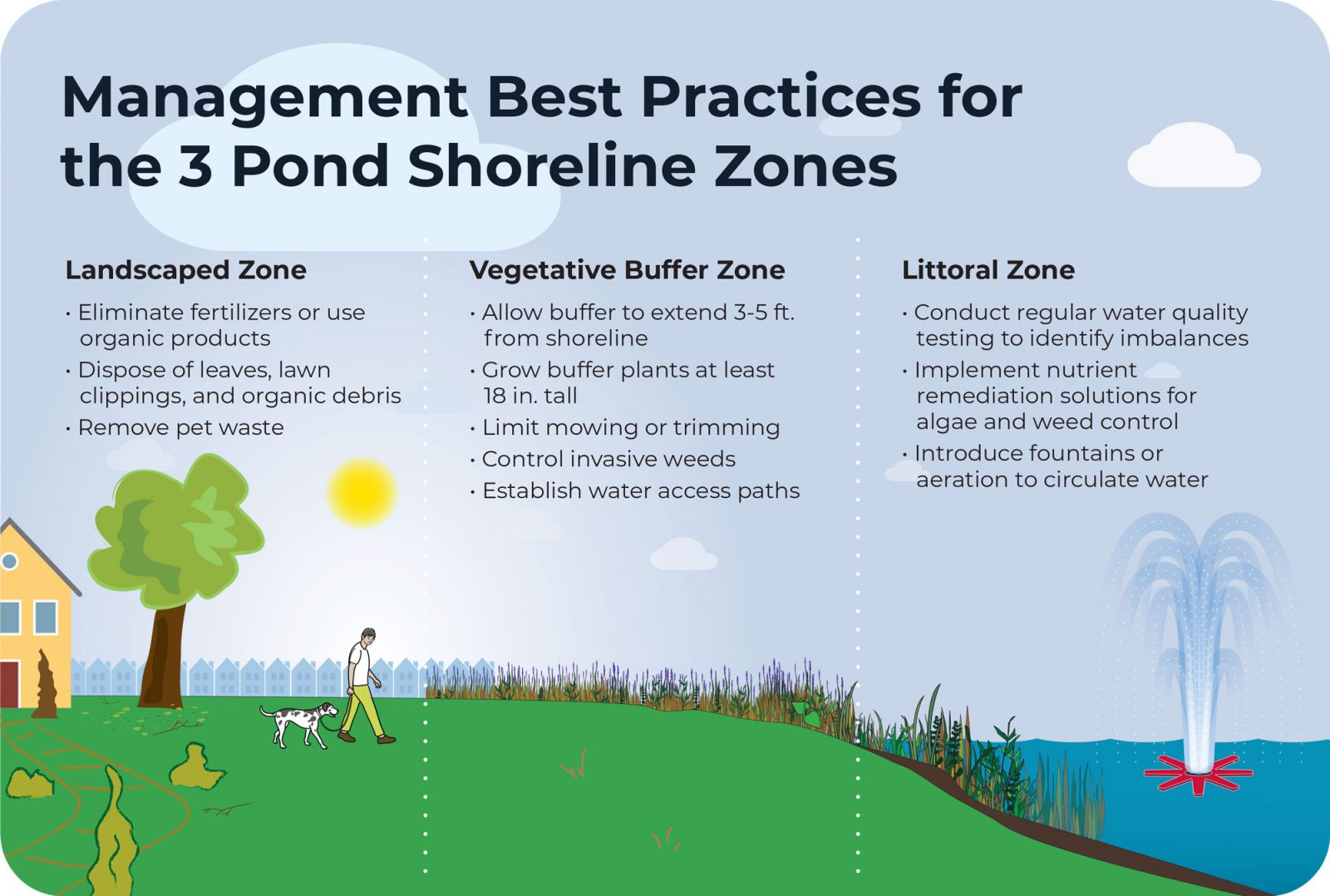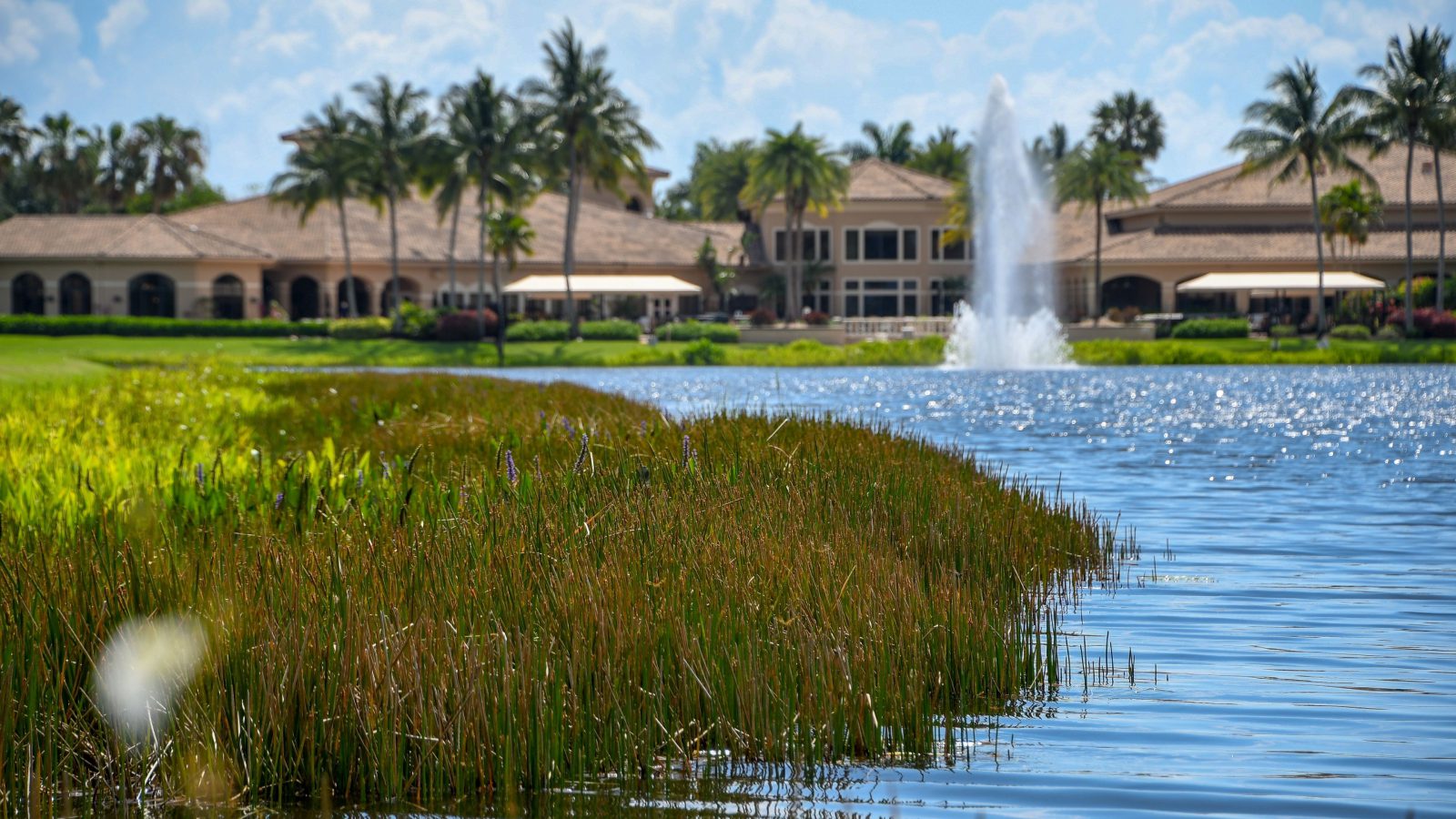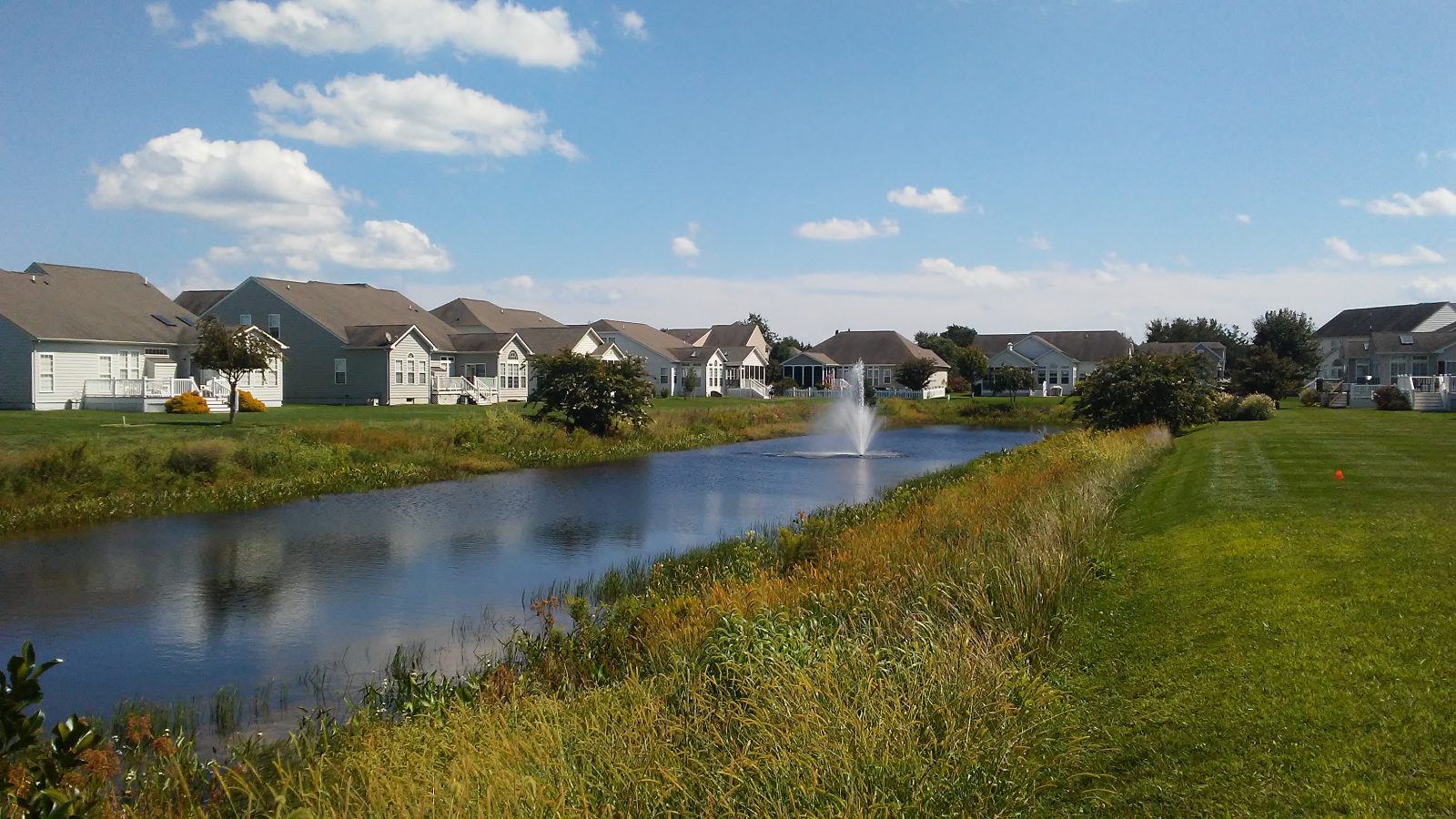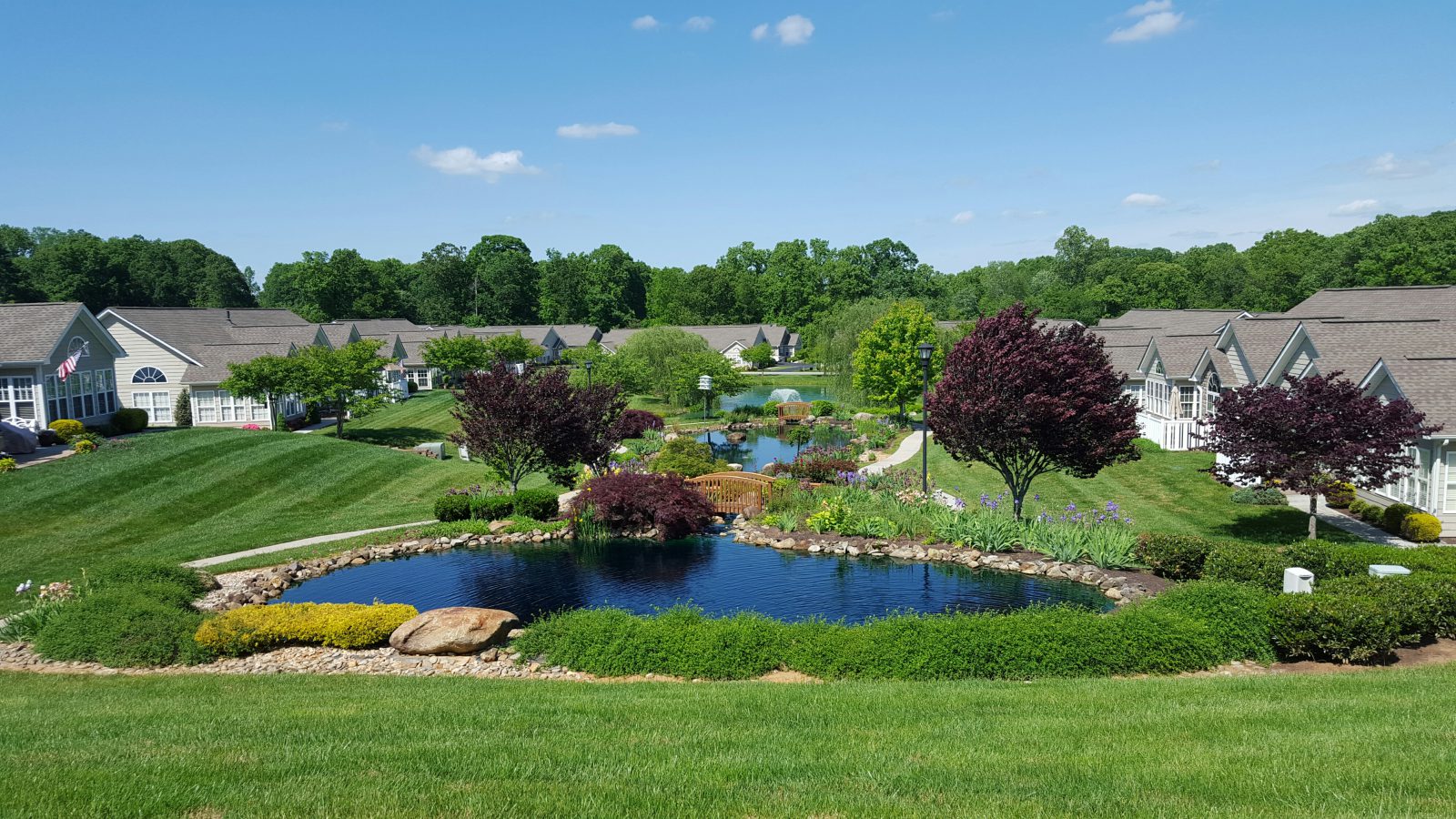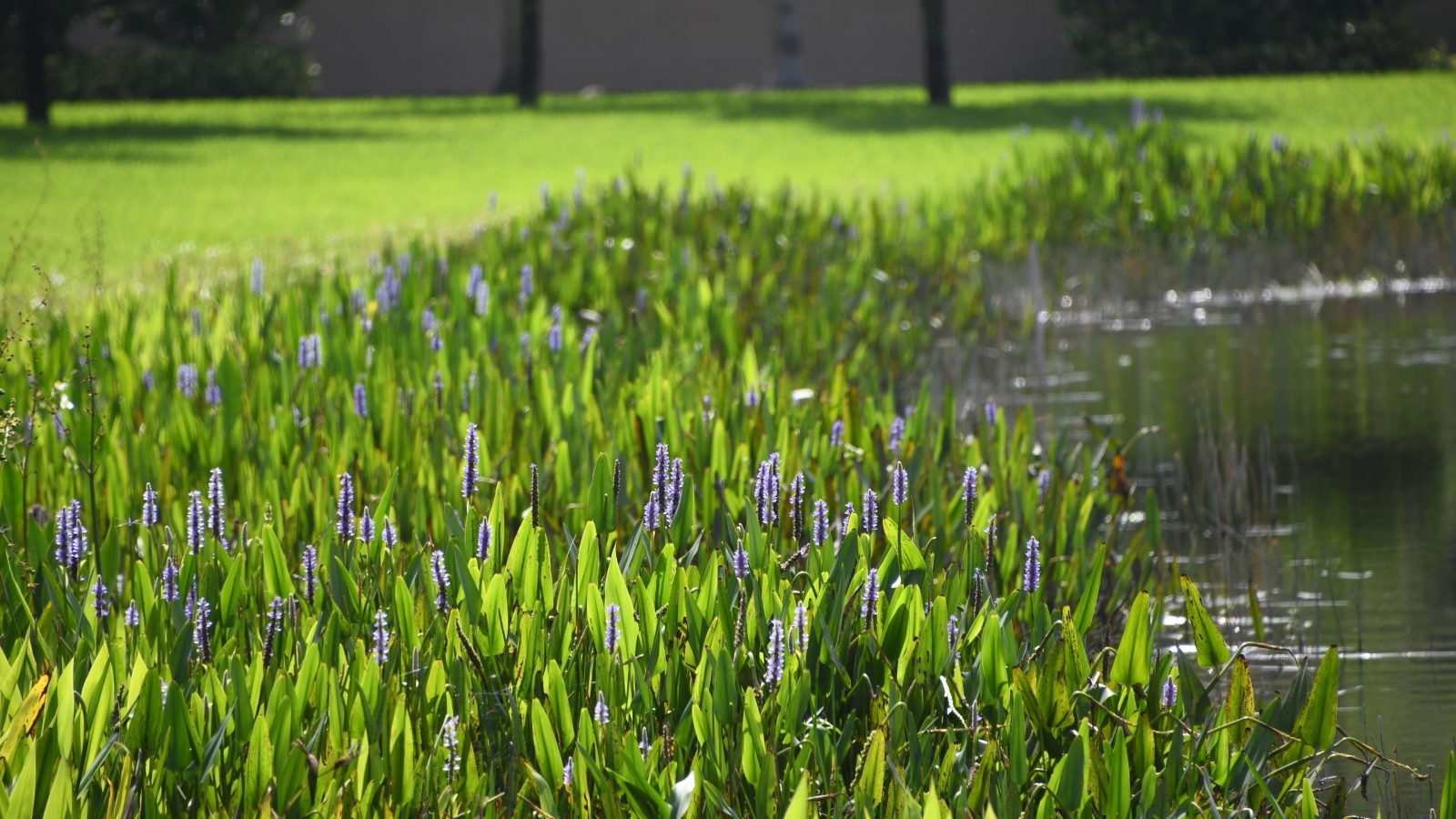
Beyond the Water: Effectively Managing Lake and Pond Shorelines
Imagine taking an evening walk as the sun sets across the beautiful lake or pond in your community. The sky is pink and orange, crickets are chirping, and a warm breeze blows across the water. Now, imagine looking down at the steep shoreline in front of you, finding that it’s bare, crumbling, and so unstable that you’re weary to venture to the edge. Not only is this an unsightly and even dangerous distraction, it can make residents question the management priorities of their association and deter new homeowners from settling down in the community.
Even the most well-cared for lakes and ponds are incomplete without regular shoreline maintenance. Preventative management is necessary to support the health and longevity of the overall ecosystem, and management efforts can vary for each part of the shoreline. However, before jumping into implementing proactive and ongoing strategies, existing erosion issues must be addressed.
Repairing Shoreline Erosion
The most effective solution for severe erosion is installing a bioengineered living shoreline. This is a specialized soil containment system composed of a knitted mesh material that reshapes and anchors the shore in place. This solution has two-fold benefits; in addition to enhancing the aesthetics of any property, professionals can also restore pond volume by repurposing bottom muck during the installation process.
Once erosion is corrected, community managers can turn their attention to proactive management strategies that support multiple areas: the littoral zone, the buffer zone, and the landscaped zones that surround it. They all have a significant impact on the overall health of a lake or pond, but each is unique and benefits from tailored management approaches.
The Littoral Zone
The littoral zone is the sloped “shelf” that connects water to land. Sunlight penetrates through the entire water column in this shallow area. When healthy, the littoral zone can resemble a miniature wetland consisting of native plants that increase dissolved oxygen and create vital habitat for beneficial fish and organisms. Typically, the littoral zone reflects the health of the entire aquatic ecosystem.
When managing the littoral zone, aquatic experts focus on several priorities. Cultivating a healthy littoral ecosystem means nurturing beneficial species while managing undesirable weeds and algae.
- Regular water quality testing can identify imbalances in the ecosystem and help inform management practices that support healthy littoral areas.
- Nutrient remediation products can help remove the excess phosphorus and pollutants to improve water quality and reduce cloudiness and odors.
- Beneficial microorganisms and bacteria can be introduced to help maintain ecological balance and sustain aquatic life—like probiotics for your pond.
- Sometimes, the littoral zone can become stagnant and oxygen-deprived under the hot sun. A floating fountain can help circulate and oxygenate this shallow area while creating beauty and movement on the surface.
The Vegetative Buffer Zone
The buffer zone refers to the area directly on the shoreline above the littoral shelf, extending several feet in elevation. A healthy buffer zone contains native grasses and flowering plants with complex root systems that hold soil in place. These beneficial buffer plants not only prevent erosion but also help filter out the debris and pollutants contained in stormwater runoff.
Professionals utilize many strategies to help enhance the buffer zone and maintain a healthy living shoreline.
- An ideal buffer should extend 3-5 ft. from the shoreline and grow at least 18 in. tall. Limit mowing in this area to prevent stunted growth and shoreline instability.
- Vegetative buffers are susceptible to the growth of invasive weeds. EPA-registered herbicides are sometimes necessary to target this growth. Professional drones have made monitoring and applications safer and more efficient.
- Establish designated paths and docks for residents to enjoy the water without trampling the buffer zone.
The Landscaped Zone
This is the area that is generally mowed and landscaped in the vicinity of a lake or pond. This does not simply refer to the immediate property around the waterbody – it can encompass many acres of land depending on surrounding topography, nearby pollution, and urban development. Many factors in the surrounding area can influence a waterbody.
It is crucial to adopt responsible land management practices across a community to maintain ecological balance.
- Eliminate the use of fertilizers or switch to organic products.
- Make sure plants used in gardens and landscaping are native to the area.
- Maintain lawnmowers, cars, and landscaping equipment to prevent oil leaks.
- Bag and dispose of leaves, lawn clippings, and organic debris while landscaping.
- Maintain stormwater equipment to ensure water flows properly during rainstorms.
- Introduce trash receptacles and dog waste stations throughout the community.
- Educate residents about why and how they can support these proactive efforts.
Repair and Prevent Future Erosion Damage
Lakes and ponds are dynamic, ever-changing environments that are impacted by countless environmental and human influences. Properly caring for your waterbody starts with bioengineering a more stable and long-lasting living shoreline. Then, proactive ongoing shoreline maintenance will help ensure your waterbody stays healthy and enjoyable—from the outside in.
Contact Us to Manage Your Lake or Pond Shoreline
Call us at 888-480-5253 or complete the form below to connect with an aquatic management expert.
SOLitude Lake Management is a nationwide environmental firm committed to providing sustainable solutions that improve water quality, enhance beauty and preserve natural resources.
SOLitude’s team of aquatic scientists specializes in the development and execution of customized lake, stormwater pond, wetland and fisheries management programs. Services include water quality testing and restoration, algae and aquatic weed control, installation and maintenance of fountains and aeration systems, shoreline erosion control, muck and sediment removal and invasive species management. SOLitude partners with homeowners associations, golf courses, private landowners, businesses and municipalities. SOLitude Lake Management is part of Rentokil, a leading business services company, operating across the United States, Canada and Puerto Rico.
For more information, visit SOLitude Lake Management at solitudelakemanagement.com, and connect on Facebook, LinkedIn and Twitter.








